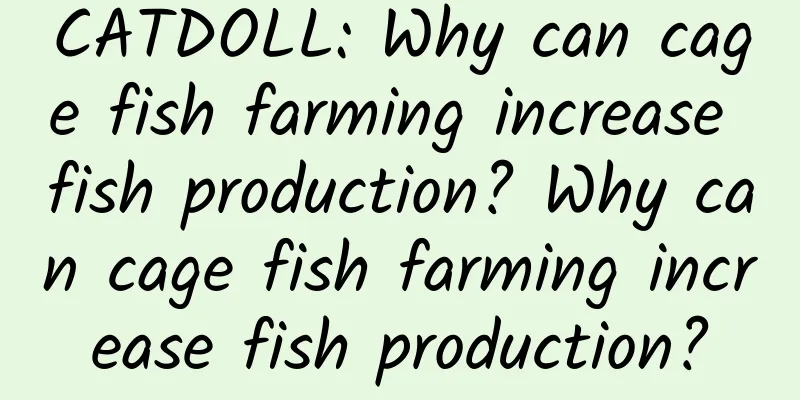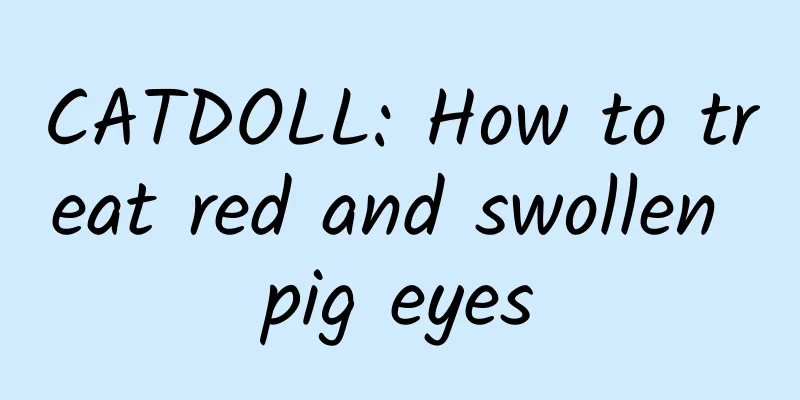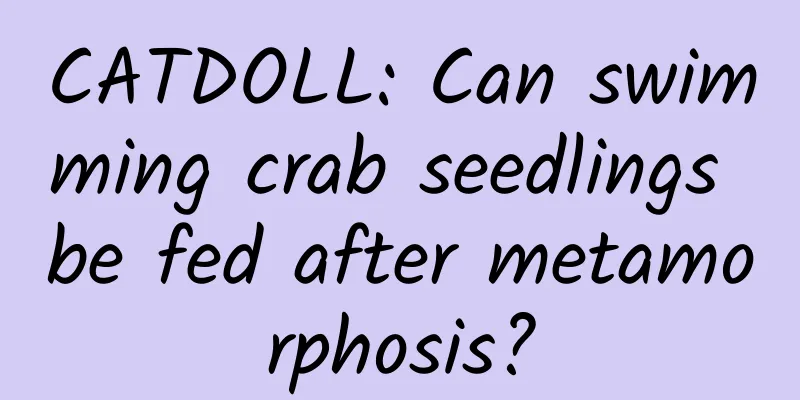CATDOLL : CATDOLL: Why can cage fish farming increase fish production? Why can cage fish farming increase fish production?

Why can cage fish farming increase fish production? Why can cage fish farming increase fish production?1. Because it can make full use of the water surface. If we put the fry directly into the lake or the ocean, then the fish will "jump with the water" and no one knows where they will swim to. There are also many enemies that will hurt them, and not many of them can really grow up. In addition, natural bait is relatively difficult to find, so they will not grow fast. Now, if we put the fry in a cage and raise them, there will be no such problems. Because the container is a cage, unlike fish farming in a pond, the mesh of the cage is unobstructed with the lake or sea water. With the breeze, the water quality inside and outside the cage is exchanged, and the fish in the cage has fresh oxygen just like in the lake or the ocean; the small fish, shrimps, and plankton in the lake and the ocean are not restricted by the cage and can enter and exit freely, and can still serve as food for some fish. For example, in the Bailianhe Reservoir in Hubei Province, silver carp and bighead carp fry that feed on plankton were raised in 8-square-meter cages without any bait. Relying solely on the plankton in the reservoir itself, it took only 75 days to grow 1,236 kilograms of fish over 13 centimeters. Another example is the Yangtze River Fisheries Research Institute, which used cages to raise adult silver carp and bighead carp in 1977 without any bait. After one year, the net output per mu was 33,633 kilograms, which was more than 20 times the yield of intensive breeding in ponds with bait. This not only provided more fresh fish for the market, but also saved a lot of land and fertilizer. 2. Other fishes raised in net cages need to be fed with bait. At present, different artificial synthetic granular baits are generally prepared according to the different fish species raised. For example, the formula of grass carp bait should include rape straw, soybean straw, bean cake, rice bran, silkworm pupae, bone meal, salt, etc. If the amount of these synthetic baits is properly prepared, 52 catties per liter can grow 1 catty of fish meat. According to foreign data, the highest annual output of catfish raised in net cages has reached 480 catties per cubic meter. 3. Fish raised in net cages are not afraid of being harmed by other ferocious fish; they can be caught at any time after they are grown, and no longer need to be caught hard before they can be put on the market, which is like a living fish reservoir. In addition, raising fish in net cages can also observe the ecological activities of fish, conduct scientific research, and detect fish diseases in time for prevention and treatment. Looking for freshwater fish farming technology!Freshwater fish farming is a method of producing high-yield fish by releasing fish species into water bodies and performing certain feeding and management, or by breeding and protecting fish resources in water bodies. At present, there are more than 30 species of freshwater fish farming in China. According to the characteristics of farmed fish, water conditions, and farming measures, freshwater fish farming is divided into the following methods: According to the requirements of water temperature for farmed fish, they are classified as follows: for warm-water fish farming, the general water temperature is 15_30℃, such as carp, grass carp, silver carp, bighead carp, crucian carp and bighead bream; for cold-water freshwater fish farming, the general suitable temperature is 10_20℃, such as rainbow trout and silver carp; for hot-water fish farming, the general suitable temperature is 18_30℃, such as tilapia and freshwater silver pomfret. According to the aquaculture water conditions, fish species and specifications, water area types and aquaculture measures, freshwater fish aquaculture is divided into the following methods: a. Still water fish farming and flowing water fish farming b. Monoculture, polyculture and interculture c. Fish farming in ponds, rice fields, rivers, lakes, reservoirs, cages, enclosures and fences, and factory fish farming, etc. d. Intensive farming, semi-intensive farming, extensive farming, etc. The following is a brief description of the important aspects of pond fish farming technology. Fish pond Pond fish farming is the fish farming method used in most parts of China. Currently, the output accounts for more than 60% of freshwater fish farming. It has the characteristics of small investment, high returns, quick results and stable production. Fish pond conditions Area: Generally, the area of a fish pond is 5-10 mu, which is easy to manage. The area of a parent fish pond, a fry pond, and a fish fingerling pond is preferably 3-5 mu. Water depth: Generally, the depth of adult fish ponds is 2-3 meters. Wintering ponds in the north should be 1.5-2 meters below the thickest ice layer in severe cold. The water depth of fry ponds and hatchery ponds should be 1.0-1.5 meters. Fish fingerling ponds generally require a water depth of 1.5-2.0 meters. Water quality: Abundant water resources and good water quality are the basic conditions for fish farming. Requirements for bottom soil: The best bottom soil for pond is loam, sandy loam, followed by clay. Preparation before stocking Rest the pond, remove weeds and impurities from the bottom of the pond, and level the pond. Pond cleaning and disinfection Traditional pond cleaning method: drain the water in winter, remove pests and improve the bottom quality by freezing, drying and exposing the pond bottom to the sun. Drug pond cleaning: quicklime or bleaching powder can be used. Water injection and water quality training After the pond is disinfected, wait until the toxicity of the drugs disappears before adding new water. 7-10 days before stocking the fish, add basal fertilizer to cultivate the water quality. Fingerling stocking Stocking large-sized fish species is a high-yield measure for pond fish farming. Large-sized fish species have strong disease resistance, high survival rate, and the characteristics of rapid growth. Under pond breeding conditions, grass carp generally stocks fish species weighing 0.25 kg, and can reach specifications of 0.5-0.75 kg in autumn after 4 months of breeding, such as stocking 0.5-0.75 kg, which can grow to 1.0-1.5 kg. Silver carp and bighead carp generally stock one-year-old fish species, 12-18 cm of specifications, and can reach 0.5-0.75 kg when leaving the pond. Other fish such as carp, crucian carp and bighead carp all stock one-year-old fish species, and the density is sparse, and the specification is about 12-14 cm. After several months of breeding, carp can reach specifications of 0.5 kg, bighead carp 150-350 grams, and crucian carp more than 100 grams. High-yield stocking mode: Based on many years of breeding experience, various places have developed many stocking models after scientific summary, which are not listed here one by one. Here we only introduce the 80:20 stocking technology: 1. Prepare the pond using the standard method described above. 2. Stock the prepared pond with uniform-sized fish species that can eat pellet feed (such as crucian carp) and filter-feeding fish species (such as silver carp) of relatively uniform size, accounting for approximately 80% and 20% of the total production respectively. 3. Feed 80% of the fish with a nutritionally complete, physically sound pelleted feed according to the prescribed plan and method. 4. Throughout the culture cycle, always maintain the pond water quality at a level that does not cause stress to the fish. 5. At harvest, the main culture fish (80%) should be of uniform size and reach marketable size. Fingerling stocking density The stocking density used in various places should be adapted to local conditions according to the pond conditions. For farmers who adopt the 80:20 pond fish farming technology for the first time, the weight of the main fish harvested per acre of water surface shall not exceed the following limits: a. In ponds with limited oxygenation and no flushing, the fish weight is set at 167 kg; b. In ponds with unlimited aeration and limited flushing, the fish weight is set at 267 kg; c. In ponds where aeration and flushing are not restricted, the fish weight is set at 400 kg; d. Together with 20% of the weight of the stocked fish, the total fish production weight of ponds a, b, and c is 209 kg, 333 kg, and 400 kg respectively. e. If the average size of fish out of the pond is expected to be 500 grams, the total number of fish stocked in ponds a, b and c is 418, 666 and 800 respectively, of which 80% are main fish and 20% are supplementary fish. Feeding and management of fish in ponds Good management is an important factor for successful breeding. The ultimate goal of breeding is to obtain the maximum profit. The maximum profit is achieved by maintaining a balance between production costs and the quality and quantity of fish species, the quality and amount of feed, and the quality of the environment. Scientific breeding management can be summarized in the following eight aspects: Patrol the pond frequently and observe the dynamics of the fish population in the pond Patrol the pond every morning, noon and evening. Observe whether the fish are floating and the degree of floating before dawn. During the day, check the fish activity and feeding situation by feeding and measuring water temperature. In the hot season and when the weather changes suddenly, the fish are prone to serious floating. Patrol the pond around midnight to prevent serious floating and flooding. Remove weeds and pollutants, keep the water fresh and the pond environment clean, and prevent and control diseases in a timely manner. Master the injection and drainage of the pond, maintain appropriate water volume, prevent waterlogging and drought, and prevent fish from escaping. Depending on the situation, inject water once 10-15 days to replenish evaporation consumption, so that fish have ample and comfortable space for activities and a good living environment. Determine the amount of feed based on the weather, water temperature, season, water quality, and fish growth and eating habits, and take timely disease prevention measures. Make good budget and allocation for feed and fertilizer demand throughout the year. Use aerators, bait throwers and other fishery machinery reasonably, and ensure proper maintenance and electricity use. Pay attention to market conditions and arrange to release the fish from the ponds in a timely manner. Where conditions permit, you can implement rotational catching and releasing. The following aspects should be considered when doing a good pond diary record and statistical analysis: Fish stocking and planned and actual harvest records Feeding and fertilization records Water quality management and fish disease records Economic Benefit Analysis The above are the main points of pond fish farming technology. They can be systematically summarized in eight words: The water must have sufficient water source, good water quality, suitable water temperature, and spacious water surface; The species should be high-quality species and large-sized fish with strong physique; The bait should be a nutritionally complete artificial compound pellet feed; Higher density leads to higher yield; Mix appropriate amount of fattening aquatic fish; Catch and release in rotation, or crop rotation, where the first crop is for growing fish and the second crop is for raising fry; Prevention: Do a good job in disease prevention and treatment, and implement the principle of "early prevention when there is disease, prevention before there is disease, and prevention is more important than treatment"; Careful daily management. The development of intensive high-density aquaculture technology will play an important role in the future aquaculture industry. There is great potential for the development of high-density freshwater fish farming using lakes, reservoirs and rivers. Suitable freshwater fish farming methods include cage fish farming, fence fish farming and running water fish farming. Cage fish farming. It is suitable for a wide range of waters. It can be set up in lakes, reservoirs, and rivers. As long as the water depth is greater than the height of the cage, normal breeding can be carried out to build a "water pond". It has more active oxygen than land pond water and stronger sewage discharge capacity. It is more suitable for single or multiple species intensive breeding, high yield, easy management, and easy fishing. Intensive cage fish farming is a new fish farming technology that combines the superior environmental conditions of large and medium-sized water bodies with the intensive breeding methods of small water bodies. In eutrophic waters, generally 1 mu of cages are set for every 100 mu of water surface, and 1 mu of cages are set for every 200 mu of medium-trophic waters. For example, cage carp farming, 60 to 80 carp species with a body length of 13 to 20 cm are stocked per cubic meter. After 200 days of breeding, the weight of each carp out of the net can generally reach 0.65 to 0.75 kg, and the per-mu yield can reach 15,000 to 25,000 kg, with a high per-mu yield of more than 50,000 kg. Cage fish farming is one of the important ways of natural water breeding in the future. Fence fish farming. Suitable for large and medium-sized waters with small water level drop, abundant natural bait, flat and shallow bottom. The specific method is: according to the terrain of lakes, reservoirs and some non-navigable rivers. The net is inserted into the bottom of the water at one end, connected to the stone dragon, and the other end is exposed to the water surface and fixed with piles. In this way, the lakes and reservoirs are enclosed into several blocks of a certain area and shape, which can be large or small, and divided and conquered to create this semi-artificial ecosystem, combining intensive and extensive breeding, using natural bait as the main and supplemented by artificial feeding, and the small enclosed water surface can be intensively raised like a pond. The yield of fence fish farming per mu is generally 250-300 kg, and the highest is more than 800 kg. Flowing water fish farming. High-density flowing water fish farming is to use the water potential of passing water in areas with abundant water resources, choose the terrain with a drop, build shallow and small fish ponds, divert water to flow by gravity, and centrally release large-sized fish species for high-density artificial feeding and intensive breeding. This production method occupies a small area, has simple equipment, fast fish growth, and high yield. Generally, fish species weighing 70 to 150 grams are released from March to April, and the weight reaches 0.8 to 1.0 kilograms by mid-November, and the yield per square meter of water area reaches more than 200 kilograms. Places with cold springs or warm water resources are particularly suitable for promoting flowing water fish farming. The main species raised are rainbow shoals, tilapia, carp, grass carp, etc. Several key links in freshwater fish farming Information source: Sichuan Agricultural Economics Network Vision protection color: [Large Medium Small] [Print this page] [Close window] my country has a long and rich experience in freshwater fish farming. As the main body of freshwater fish farming, pond fish farming technology has developed into the "water, seeds, feed, mixing, rotation, prevention, and management" eight-character refined fish farming method in long-term fish farming practice. The "eight-character" method of fish farming can make full use of various resources for fish farming and increase production. It is a high-yield fish farming technology worthy of promotion and with significant benefits. The specific practices of the "eight-character method" of fish farming are briefly introduced as follows: 1. Water - Make full use of water resources and improve water quality The fish pond has a large surface area and a large wind-receiving area, which can increase dissolved oxygen and facilitate convection between the upper and lower water layers. However, an area that is too large is not conducive to feeding, catching and breeding management. The area of a newly built fish pond should be 5-7 mu, and the water depth should be 2-2.5m. If the water is too deep, not only will the dissolved oxygen be small, but the light will not penetrate, the photosynthesis of aquatic plants will be weakened, and the feed residues and fertilizers will be deposited at the bottom of the pond and the organic matter will not be quickly decomposed and difficult to be absorbed and utilized by aquatic plants. This will make the bighead carp, chain fish and some bottom fish that rely on plankton to grow grow slowly and have low yields. Before introducing fish into the pond, necessary water quality tests must be carried out, and the water quality should meet the national water quality standards. Close attention must be paid to preventing toxic wastewater and farmland toxic water from flowing in. The toxic components in the water must not exceed the maximum allowable concentration. At the same time, it should be noted that the long-term accumulation of certain heavy metals can cause fish diseases or even death. The most appropriate way to improve the water quality of the entire pond is to catch all the fish in the pond and put it on the market, to ensure that the water level is shallow during winter droughts, and to combine it with basic agricultural water conservancy construction and rural fertilizer accumulation and fertilization. 2. Seeds: healthy, disease-free, high-yield and high-quality fish In order to cultivate high-quality fish species, it is necessary to select healthy, disease-free, high-yield and high-quality fish as broodstock for breeding. First, in the stage of fish seed cultivation, sexually mature broodstock should be carefully selected, and the correct aphrodisiac method should be used to incubate the mature fish eggs in the loop incubation pool and incubation tank. During the incubation, in order to increase the dissolved oxygen in the water, the fish eggs can also be impacted with micro-flow water so that the fish egg embryos can develop and grow normally. In the stage of fish seed cultivation, the pond water must first be properly fermented to cultivate plankton and provide sufficient feed for the fish species in the pond. This method of cultivating fish species is called "fertilizing the pond with fertilized water". 3. Density - Reasonable density Implementing a reasonable density is a key measure to improve water utilization and increase unit area production. Density should be based on pond conditions (water surface, water depth, water source, water quality, bottom mud, etc.). It is determined by fish species conditions, feeding and fertilizer conditions, drainage and aeration equipment conditions, management conditions, etc. In actual production, there are two ways to determine stocking density: empirical method and calculation method. You can refer to the following empirical formula: Stocking quantity per mu = estimated yield per mu ÷ [(average weight of planned adult fish - average weight of fingerlings at stocking) × estimated survival rate] 4. Mixed - Multi-species Mixed Breeding Polyculture is an important measure to fully utilize water and bait to increase fish production. There are three main types of polyculture: one is polyculture of the same species and different ages; the second is polyculture of different species; the third is polyculture of different species and different ages. Practice has shown that it is better to culture 7 to 8 species of adult fish in ponds. The water layers, feeding methods and food composition of polycultured fish should be as different as possible, while the requirements for water quality, water temperature and dissolved oxygen should be similar. In addition, it is required that the various polycultured fish can coexist peacefully, not kill each other, and can play a mutually beneficial role. Generally, the main fish cultured in the upper layer are chain and bighead carp, which can account for 40%; the main fish cultured in the bottom layer are green carp, grass carp and carp, which can account for 40%; the auxiliary fish cultured in the bottom layer are bream, bream, silver carp and crucian carp, which can account for 20%. 5. Wheel - Wheel Catch and Release The use of rotational catch and release can increase the yield per unit area by about 20%. There are three main ways of rotational catch and release. First, release enough at one time and catch in stages. In winter or early spring, various fish species of different sizes are released in a planned manner, and then they are caught in rotation several times a year. The characteristics of large-sized fish species that compete for food and grow fast, and small-scale fish species that compete for food and grow slowly are used to catch the big ones and keep the small ones. Second, stocking and catching in stages. Fish species are not put into the pond at one time, but are caught once each round, and the corresponding number of large-scale fish species are supplemented at the same time. This method is more conducive to the reasonable growth of fish than releasing enough at one time. Third, catch adult fish in rotation and raise fish species. That is, use adult fish ponds to cultivate fish species. Although this type of fish species cannot grow into commercial fish in the same year, it can be used as large-scale fish species in the second year. 6. Feeding: High-quality feed, four fixed feeding rules There are many sources of fish feed. Any artificial beverage that can be used to feed livestock and poultry can be used as fish feed. There are also natural biological baits in water bodies for fish to eat. According to the source of feed, it can be divided into plant feed and animal feed. When putting in feed, it is necessary to ensure good quality, sufficient quantity and variety to meet the feeding needs of various fish. When putting in feed, four "fixed" must be achieved: one is quality, to ensure that the bait is both fresh and nutritious; two is quantity, to determine the amount of feed to be fed according to the size of the fish, season, and feeding situation; three is positioning, that is, fixing the feeding position to facilitate observation of feeding situation; four is timing, to determine the feeding time and frequency according to the principle of "eat less and more meals". 7. Management - Scientific Management The material conditions and technical measures for fish farming can only be effective and achieve high yields through scientific daily management. It is necessary to patrol the pond once in the morning and evening to observe the changes in water quality and color and the feeding situation of fish, maintain the appropriate water level, prevent drought and waterlogging, prevent fish from escaping, regularly remove grass residues in the pond, clean the feeding area, block snake and rat holes, and kill predators and animals. At the same time, keep a fish farming diary to accumulate fish farming experience. 8. Prevention - Prevention and treatment of fish diseases The prevention and control of fish diseases should adopt the principle of "early prevention when there is no disease, early treatment when there is disease". The main experience in preventing and controlling fish diseases can be summarized as "four eliminations": first, fish pond disinfection, that is, using medicine to clean the pond and kill pathogens and biological pests in the pond; second, fish fingerling disinfection, when the fish fingerlings are put into the pond, the fish body is disinfected with medicine to prevent pathogens from being brought into the fish pond; third, feed, feeding area, and tools are disinfected to prevent the spread of pathogens; fourth, water disinfection, regularly spraying the entire pond with medicine before the disease season. Ornamental or edible? |
<<: CATDOLL: How to quickly treat Koi fish scales and why do they scale?
>>: CATDOLL: Fish farming technology in fish ponds?
Recommend
CATDOLL: What are the conditions for applying for a beekeeping business license?
1. What are the procedures for a beekeeping compa...
CATDOLL: Are clams freshwater or saltwater?
Are clams freshwater or saltwater? Clams are mari...
CATDOLL: How do you make yellow croaker? Why is there still fish scales on it? How do you remove the scales?
1. How to make yellow croaker? Why is there still...
CATDOLL: I have some grass carps. But there are a lot of tadpoles in my pond. Do tadpoles have a conflict with grass carps?
1. I have some grass carps. But there are a lot o...
CATDOLL: What should you pay attention to when raising earthworms in pots (What is the easiest way to raise earthworms at home)
1. Can earthworms be placed in potted plants? If ...
CATDOLL: What do seven-star fish fry eat to grow fastest?
1. What do seven-star fish fry eat to grow fastes...
CATDOLL: What did I discover while raising snails? (What truth did I discover while raising snails)
1. What is the best way to keep snails without ki...
CATDOLL: Which month is the best time to raise silkworms? (Which month is the best time to raise silkworms?)
1. Which season is suitable for raising silkworms...
CATDOLL: What is the diet of barracuda?
The diet of pike is very wide, and it is an omniv...
CATDOLL: How to raise a small alligator turtle?
How to raise a small alligator turtle? When raisi...
CATDOLL: Advantages and development prospects of Changfeng breeding pig farm
Changfeng Breeding Farm is a breeding farm locate...
CATDOLL: There are a lot of flies in the pig house, what should I do?
There are a lot of flies in the pig house, what s...
CATDOLL: How many pufferfish can be kept together? Attached are the breeding methods and environment
There is no limit on the number of pufferfish tha...
CATDOLL: What do you feed spiders?
1. What should you feed spiders? Spiders have a m...
CATDOLL: Centipede breeding (how to breed centipedes)
When breeding centipedes artificially, you must t...









